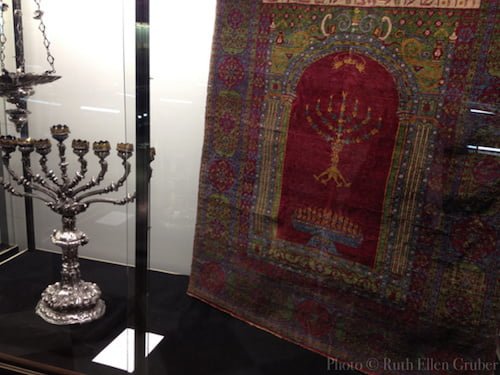 |
| Downtown Lodz today |
The Jewish Quarterly publishes my review of the book Memory Unearthed: The Lodz Ghetto Photographs of Henryk Ross, a fascinating collection of posed photographs and unexpected snapshots taken in the WW2 Lodz Ghetto and hidden underground until after the war.
By Ruth Ellen Gruber
June 22, 2015
The extraordinary images reprinted in Memory Unearthed: The Lodz Ghetto Photographs of Henryk Ross are survivors, both physical and symbolic.
Ross, born in Warsaw in 1910, was one of the more than 200,000 Jews imprisoned in the World War II Lodz ghetto. Thanks to his background as a photo-journalist, he was appointed to a privileged position—an official photographer for the Statistics Office of the Ghetto’s Jewish Council (Judenrat).
He worked in that capacity from 1940 to 1945, taking thousands of photographs that documented the widest possible range of ghetto life—and death.
On the one hand, his official work produced everything from ID portraits and group photos of ghetto police, to Potemkin village-like shots of ghetto inmates, smiling at their benches as they laboured in Council-run workshops, or “resorts”, including those that employed young children.
But he turned his lens, too, on other scenes far outside the purview of propaganda—scenes of violence and mass deportations, scenes of murder and malnutrition, scenes of death. Often taken on the sly, from a camera hidden under his coat, these images are chilling but almost familiar in the Holocaust horror they depict.
Ross, though, also immortalized intensely personal moments that put the death, destruction and degradation in a much more intimate, even unlikely, context: kids at play, a smiling bride at her ghetto wedding, friends clowning, a couple stealing a kiss.
Ross, who survived the Holocaust and emigrated to Israel after the war, knew just what he was doing and just what he wanted to do.
“Having an official camera, I was secretly able to photograph the life of the Jews in the ghetto,” he wrote in 1987, four years before his death. “Just before the closure of the ghetto in 1944, I buried my negatives in the ground in order that there should be some record of our tragedy, namely the total elimination of the Jews from Lodz by the Nazi executioners. I was anticipating the total destruction of Polish Jewry. I wanted to leave a historical record of our martyrdom.”
In January 1945, after the Red Army liberated the ghetto, he went back and dug up what he had hidden. Fewer than 3,000 of the 6,000 negatives he had buried survived intact; others were severely damaged from seven months under ground.
But by bringing them back to light, he brought them, and what they represented, back to life. Ross unearthed not only shadowy strips of celluloid; he unearthed direct testimony to the cruelty of life inside the ghetto, and direct testimony, too, to life itself – the lives lived by ghetto inmates, intimate glimpses of humanity side by side with the horror.
…Continue reading















